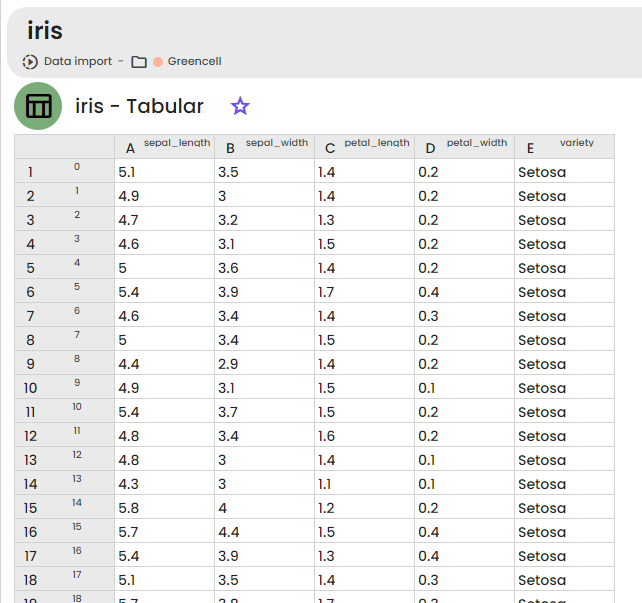Introduction
A data lab in Constellab is a virtual environment where scientists can perform various tasks related to their laboratory activities, such as data storage, data visualization, pipeline development and more. This technology consists of a set of digital tools and resources, such as scenarios, resources, notes, curated databases in open access, oriented biological resources, views and so more.

On-cloud, on-desktop or on-premises are three different ways of deploying data labs in Constellab. With an on-Cloud subscription, your data lab is fully managed by Gencovery and can be shared with any member of your space . Individuals can also use an on-desktop version for free – this self-managed option aims to access to the same set of digital tools to work individually only. Academics and enterprises seeking to utilize their own server can access on-premises data labs.
To know more about data labs in Constellab, you can watch the video about the virtual laboratory ecosystem or contact our sales department. Hereafter some complementary documentation in Community:
↗️ How to install an on-desktop data lab (in French) ?
Scenarios
A scenario is a digital procedure to conduct data analysis in order to explore or validate scientific hypotheses or to process your data in a production mode. Each scenario provides a no-code playground to run ready-to-use processes in several domains like data science, bioinformatics, modelling, stats and more. A process in Constellab is a specialized scientific task or protocol that takes data as input and generates automatically various type of outputs (data, interactive plots, etc.).
Some processes are specialized scientific functions. To facilitate the organization and access to these processes, they are grouped into bricks that serve as a library or collection of processes. Other processes are unspecialized functions like Agent and Smart Tasks.
Agent are fast and efficient tools to develop, test, use and share Python or R code snippets from the playground.
Smart Tasks democratize and accelerate data science for all scientists, based on a conversational dashboard powered by OpenAI, which generates Python code, interactive charts, and tables automatically.

Resources
A resource refers to all data-oriented objects manipulated within a data lab. All resources are stored in the lab and can be associated to a folder. From each scenario, processes utilize resources as input and produce resources as output. Users can upload resources into the lab or download them from external sources, such as another data lab.
Resources can encompass various types of objects, including data files, folders, tables, images, and more. Each resource contains different views, which are utilized to generate visualizations of the data. For example, a table can be viewed in a spreadsheet-like format or visualized as a scatter plot.

Views
A view in Constellab is a representation of data from a specific resource. Resources can have multiple views, such as tables or plots, to navigate through data effectively. Users can create their own views or choose from pre-configured views tailored to specific processes. The majority of views in Constellab are interactive, allowing users to zoom and customize graphs. Views can be shared among users and added to notes for enhanced data visualization. All generated views are saved and accessible from scenarios, resources, and the Views page which stores the history of all views.

Scenario template
A scenario template allows you to create a protocol (a predefined series of connected and configured processes) that can then be reused by you, your team or the community. By using a scenario template, you can easily set up a new preconfigured scenario, ensuring consistency. Additionally, the scenario template can be shared with other labs.
A sub playground can also be created from a scenario template to have nested playground.
Notes
A note is editable text on the lab where you can include views, images, formulas... It can be a simple note, a page of your electronic laboratory notebook or a scientific report that you can write to present the results of your scenario. These notes can be synchronized within a folder (in your space), allowing your team to access them. In a note, you can include various elements such as interactive views of your results (like spreadsheets, plots...), mathematical formulas, images and videos.

Note template
A note template allows you to create template of note that can be used when created a new note. A template can also be included in a note after the note has been created ( for a header or footer for exemple). A note template is also useful when generating note automatically from a scenario.
CodeLab
For bioinformaticians and developers, Constellab has its own development environment. This environment is useful to develop and test libraries of processes (bricks). The development environment includes the Codelab, a pre-configured online IDE using VsCode. Bioinformaticians can easily develop their own brick or any code with Python and quickly test it. CodeLab also supports the Jupyter notebook and a R environment can be simply installed. Developers will also be able to establish a secure connection with remote code repositories (i.e. GitLab, GitHub) and transform their code into tasks for simplified use by all scientists.
The « Core Engine » of Constellab's data labs is therefore distributed under the GNU General Public License version 3.0 (or later), which is an open source license. This license ensures that you consistently maintain the capability to develop and run your Constellab-based pipelines, guaranteeing your freedom to share and modify free software for your individual projects and businesses.